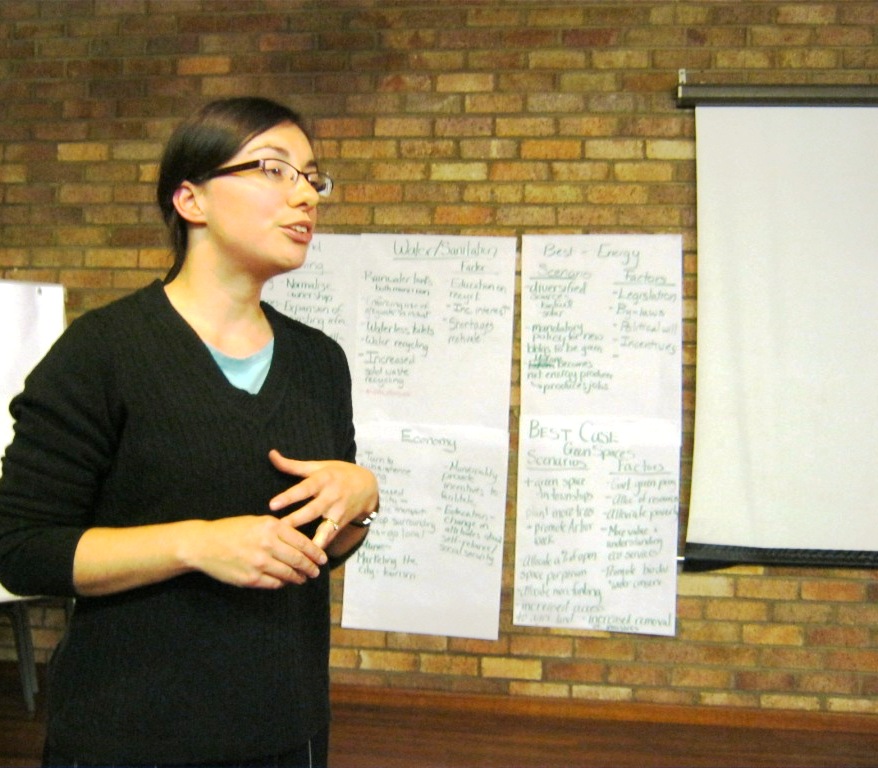
As part of their year-long project to produce a State of the Environment report, third year Rhodes Environmental Science students organised a public participation workshop on the future of Grahamstown last week.
With the help of members of the Grahamstown community who attended the workshop, both worst and best case future scenarios for Grahamstown were discussed to form part of the student’s research. This valuable input will contribute to a presentation to be presented to Makana Municipality.
Shannon Stone, Carrie-Lee Haakonsen and Samantha Munro presented a status quo scenario to the gathering on Wednesday 24 August at the Public Library activities centre. While no one can predict the future, scenarios are useful to assess and indicate numerous and potential futures that may arise from a combination of events and decisions. Using the current state of Grahamstown’s environment, projected outcomes for the year 2031 were proposed and discussed.
In the outlined status quo scenario, in 20 years’ time South Africa will still face high unemployment and economic inequality, in addition to the higher costs of energy and water. Due to increasing consumption levels, greater pressure will be placed on the environment. Continuous housing development in Grahamstown will lead to heavy increases in demand for water and greater storm- water runoff.
For the workshop component of the evening, everyone was divided into groups to discuss the best and worst outcomes of each environmental aspect, namely: land use and housing, green spaces, energy, water and sanitation and the economy. The ‘energy’ group expressed how the opposition towards the wind-farm project may cause serious problems for Grahamstown’s energy consumption.
The group suggested that, idealistically, energy sources should be diversified to include bio-fuel, bio-diesel, bio-thermal and solar power. It should also be made mandatory to install solar powered geysers into all new commercial buildings and RDP houses. Driving factors included more involvement from government, which was suggested by all of the groups, deeming it essential in terms of changing Grahamstown for the better.
The ‘water’ group’s idealistic scenario included eradicating flush toilets and recycling water, especially water used by businesses. The ‘land use and housing’ group included normalising the ownership of property, enabling the creation of a more efficient, well-regulated spatial plan. Industrial areas and residential housing are re-zoned to allow for green spaces and food gardens.
With the status quo of Grahamstown’s economy closely resembling a worst case scenario already, the ‘economy’ group suggested that we depend more on local famers and encourage subsistence farming. Driving factors for economic security included the municipality providing incentives for job creation and marketing the city. All in all, the workshop was a clever way to find solutions to environmental issues in Grahamstown, working towards sustainable solutions.
Story and picture by Anna-karien Otto
